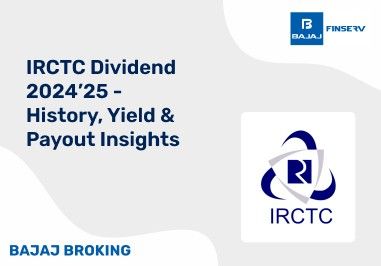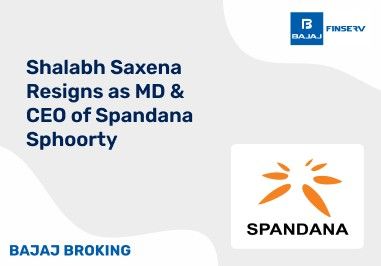BAJAJ BROKING
Tankup Engineers IPO is Open!
Open a Free Demat Account
Trade Now, Pay Later with up to 4x
Track Market Movers Instantly
How Do You Calculate Profit And Loss In Nifty Options?
Synopsis:
A Nifty option is one of the most sought-after liquid trading contracts on the National Stock Exchange. With Nifty option trading coming to more than 80% of the total volume on NSE daily, here’s a look at how to calculate profit and loss in this contract.
Introduction
An option is a financial instrument that is based on the value of its underlying stock, index, and ETFs or exchange trading funds. This kind of contract provides the buyer with the opportunity to buy or sell the underlying asset, depending on the kind of security they hold. However, the buyer is not obliged to buy or sell the asset.
There are two types of options in the stock market; call option and put option. Call options give an investor the right to buy an underlying asset at the strike price without the obligation to act on it. Put options, on the other hand, give an investor the right to sell an underlying asset at the strike price, without any obligation.
Here we will understand what a Nifty option is and how to calculate its profit and loss.
What is a Nifty Call Option all about?
The Nifty call option gives the buyer the right to buy the underlying Nifty without the obligation to buy. If the buyer wishes to purchase the underlying Nifty at a fixed price and on a fixed date, it has to be done before its expiry keeping the Futures and Options contracts’ expiry in mind. F&O contracts expire on the last Thursday of every month.
Nifty, like other shares, has a fixed lot size of 75 units at this time. It also has multiple expiry periods and different strikes.
A Nifty option, like Features, is a derivative. But where the profit and loss aspect in Features is linear, the same does not apply to a Nifty option. The profit and loss aspect during a Nifty option trading will not be straightforward and will not depend on the up and down movement in the NSE.
When an investor purchases a call option, they are awaiting the market to rise. So, by paying the premium on the Nifty option, they purchase the right to hold it. To buy the option lot, an investor or trader only needs to pay the option premium of the true value of the underlying asset like Nifty.
Additional Read: NIFTY 50 vs NIFTY Alpha 50
Understanding Costs When Trading in Nifty Options
When it comes to Nifty option trading, certain costs need to be kept in mind. Here’s a look at these costs concerning the National Stock Exchange:
- Brokerage Cost: The brokerage cost is the fee that is paid by the investor to a broker for executing a trade on the former’s behalf. For a Nifty option, the brokerage is charged on a per-lot basis. The norm for such a brokerage cost is usually ₹5 per lot.
- STT or Security Transaction Tax: The STT is a tax that is levied on the transaction of securities carried out on NSE. STT is payable on the sell side of the transaction. STT is levied at the rate of 0.05% on the premium value.
- Transaction and Clearing Charges: These charges are imposed by the National Stock Exchange. The transaction charges are levied at the rate of 0.05% of the premium value while the clearing charges are levied at the rate of 0.002% of the premium value of the transaction.
- GST or Goods and Services Tax: The GST is a tax that is paid to the government and it is charged at 18% on the combination of the brokerage and transaction charges.
- SEBI Charges: These are the charges that are payable at the rate of ₹15/Crore for the volume traded.
- Stamp Duty: The stamp duty is payable to the state government and varies from one state to another.
It is after calculating all these costs that the profit for the option transaction gets calculated.
Additional Read: What is FinNifty in the Stock Market
Formulas to Calculate P&L in NIFTY Options
The type of formula you need to calculate the P&L in Nifty options will always depend on the kind of Nifty option one is dealing with i.e. whether it is a call or a put option. Another factor that determines what formula to use is whether you are buying or selling the Nifty option.
Listed below are the different scenarios and the formulas to use to calculate P&L:
1. For Buying a Nifty Call Option:
In case you are thinking of buying a Nifty Call Option, here are the P&L calculation formulas you should be aware of:
- Profit Formula:
(Current Nifty Price - Option Strike Price) - Premium Paid
- Loss Formula:
The loss incurred on such a transaction is the Premium an investor paid for the option.
2. For Selling a Nifty Call Option:
If you are looking to sell your Nifty Call option, these are the P&L calculation formulas that you should know:
- Profit Formula:
Premium Received - (Premium Paid to Buy Back)
- Loss Formula:
The loss incurred is what Premium the investor paid to buy back
3. For Buying a Nifty Put Option:
If you are looking to buy a Nifty Put option, it would be handy to keep the following P&L calculation formulas in mind:
- Profit Formula:
(Put Option Strike Price - Current Nifty Price) - Premium Paid
- Loss Formula:
Here also the loss incurred is the Premium Paid for buying the Nifty Option.
4. For Selling a Nifty Put Option:
Here are the P&L calculation formulas if you want to sell a Nifty Put Option:
- Profit Formula:
Premium Received - (Premium Paid to Buy Back)
- Loss Formula:
The Premium Paid to Buy Back is the loss incurred in this scenario.
Factors that Affect Profit and Loss in Nifty Option Trading
There are many factors that affect the profit and loss in Nifty Option trading. Here is a list:
- Volatility:
One of the most crucial aspects that affects option prices is market volatility. With high volatility comes higher option premiums. This helps traders potentially benefit from the swing in the prices. Traders who are capable of adapting their strategies to use the market volatility for their benefit are usually at the receiving end of profits.
- Underlying Price:
The value of any options contract is linked to the asset’s underlying value. Call options gain a lot of value in a rising market and put options are profitable in declining markets. The ups and downs of the underlying value of an asset determine the potential profit of the option in question.
- Pre-Expiry Period:
With the expiration date nearing the factor of decay time comes into the picture. As the option nears the expiration date nears, its value decreases because of this time decay. This factor can have a great impact on the profit or loss of the option.
- Interest Rates:
Interest rates have quite a bit of influence on any option pricing. This is because these interest rates mould the cost of carrying the underlying asset. Investors always keep interest rates in mind when altering or defining their strategy for the option they hold.
- Dividends:
In case the underlying asset of an option is a stock, dividends can affect the option pricing, and by extension the profit or loss of that particular option.
Conclusion:
To navigate effectively through Nifty option trading it is important to keep the aspects of profit and loss in mind. Investors need to consider every factor before tweaking their strategy for a Nifty option. This will improve their potential to make profits on a Nifty option greatly.
Of course, an investor needs to do their research when trading online and then make the best decision regarding their approach towards the Nifty option.
Disclaimer: Investments in the securities market are subject to market risk, read all related documents carefully before investing.
This content is for educational purposes only. Securities quoted are exemplary and not recommendatory.
For All Disclaimers Click Here: https://bit.ly/3Tcsfuc
Share this article:
Read More Blogs
Disclaimer :
The information on this website is provided on "AS IS" basis. Bajaj Broking (BFSL) does not warrant the accuracy of the information given herein, either expressly or impliedly, for any particular purpose and expressly disclaims any warranties of merchantability or suitability for any particular purpose. While BFSL strives to ensure accuracy, it does not guarantee the completeness, reliability, or timeliness of the information. Users are advised to independently verify details and stay updated with any changes.
The information provided on this website is for general informational purposes only and is subject to change without prior notice. BFSL shall not be responsible for any consequences arising from reliance on the information provided herein and shall not be held responsible for all or any actions that may subsequently result in any loss, damage and or liability. Interest rates, fees, and charges etc., are revised from time to time, for the latest details please refer to our Pricing page.
Neither the information, nor any opinion contained in this website constitutes a solicitation or offer by BFSL or its affiliates to buy or sell any securities, futures, options or other financial instruments or provide any investment advice or service.
BFSL is acting as distributor for non-broking products/ services such as IPO, Mutual Fund, Insurance, PMS, and NPS. These are not Exchange Traded Products. For more details on risk factors, terms and conditions please read the sales brochure carefully before investing.
Investments in the securities market are subject to market risk, read all related documents carefully before investing. This content is for educational purposes only. Securities quoted are exemplary and not recommendatory.
For more disclaimer, check here : https://www.bajajbroking.in/disclaimer
Our Secure Trading Platforms
Level up your stock market experience: Download the Bajaj Broking App for effortless investing and trading













